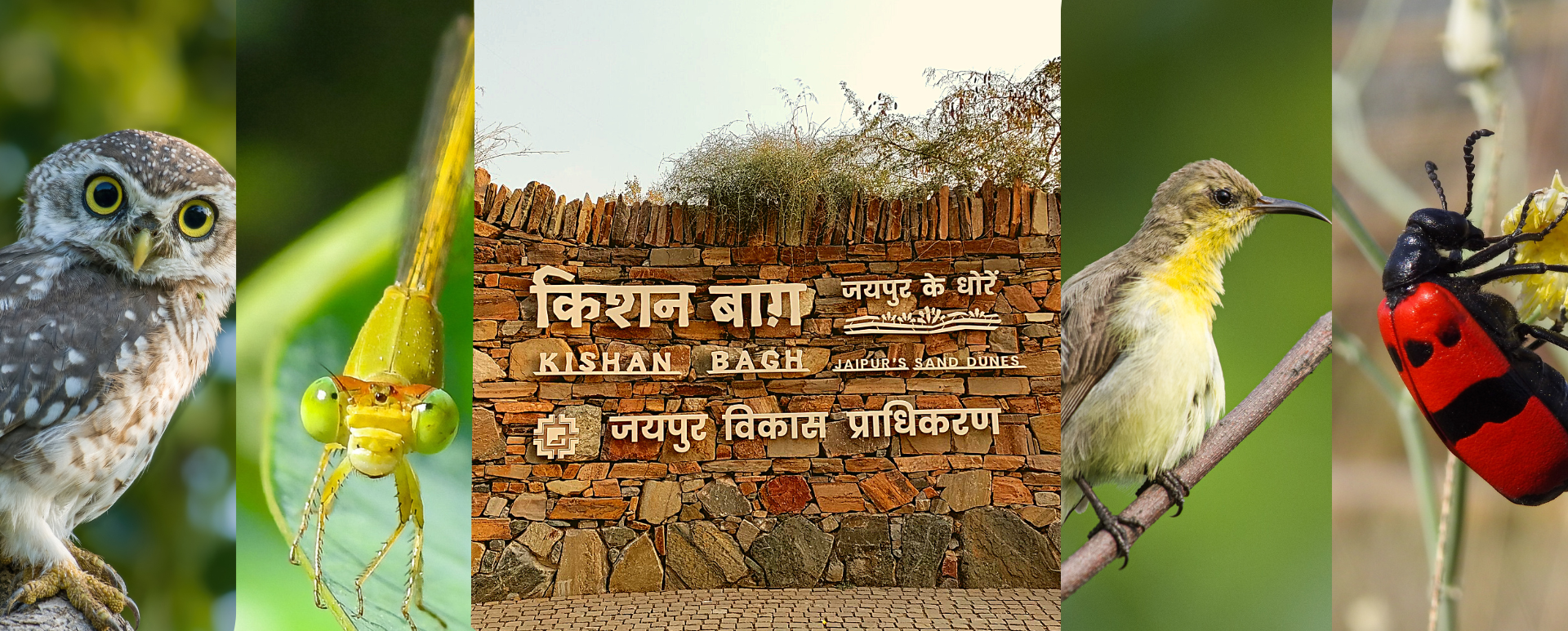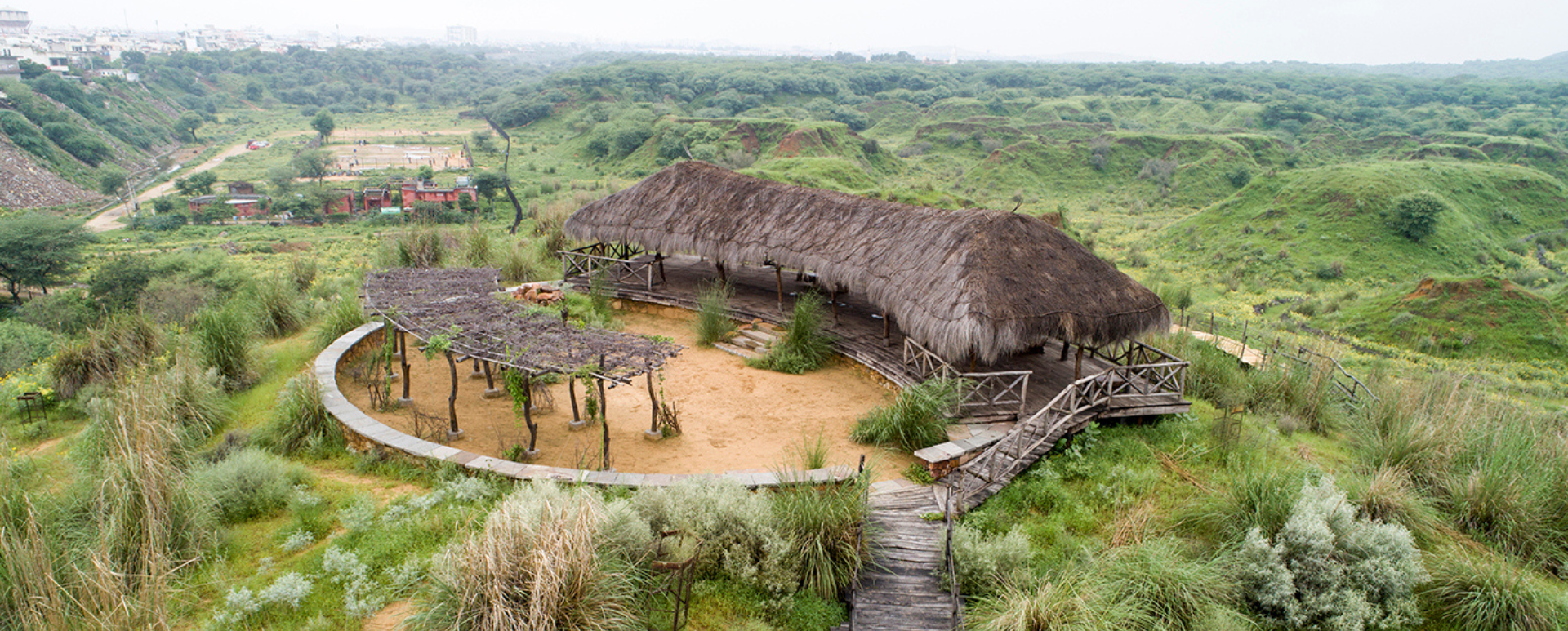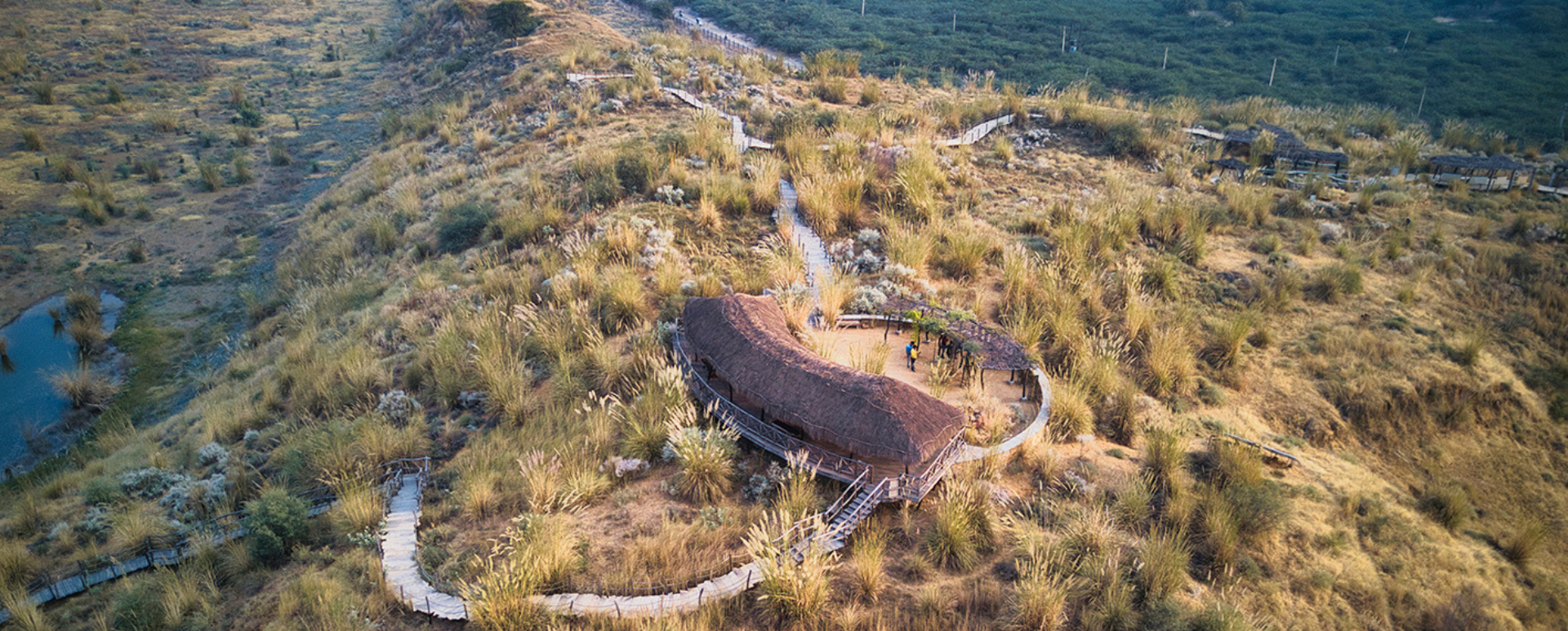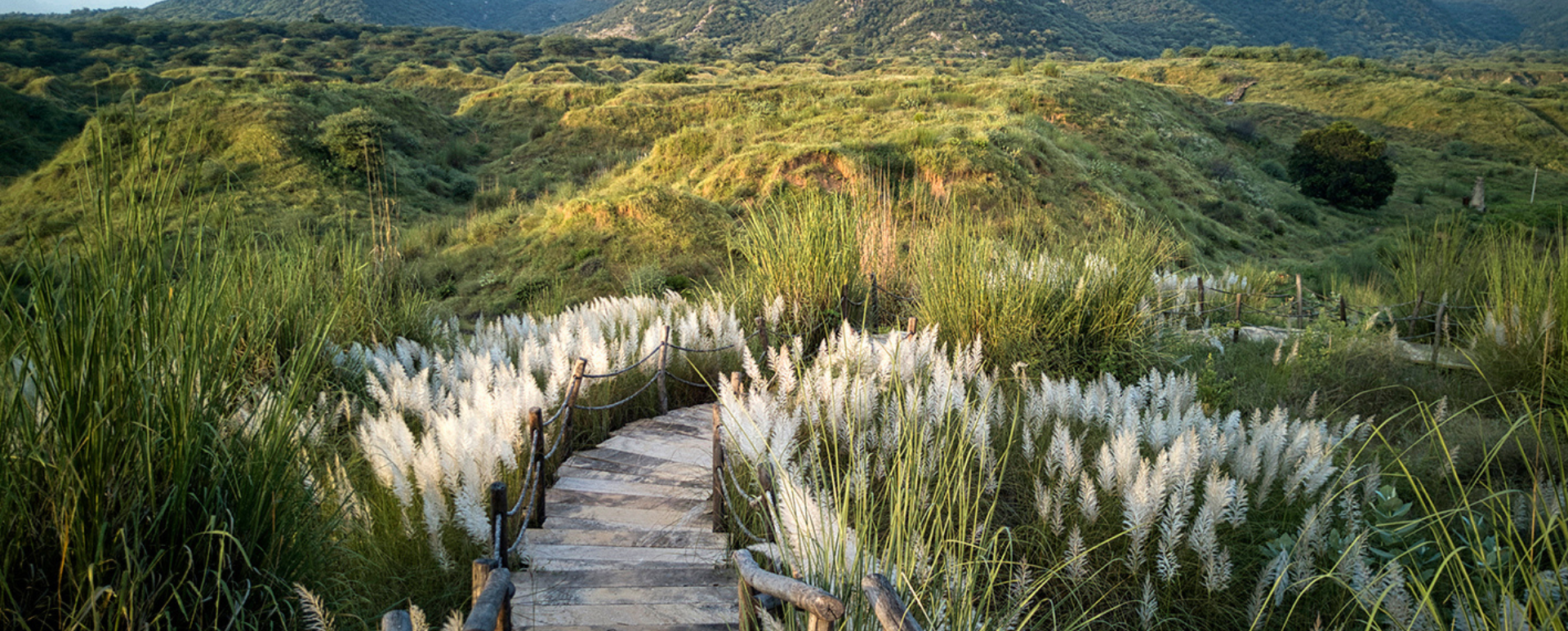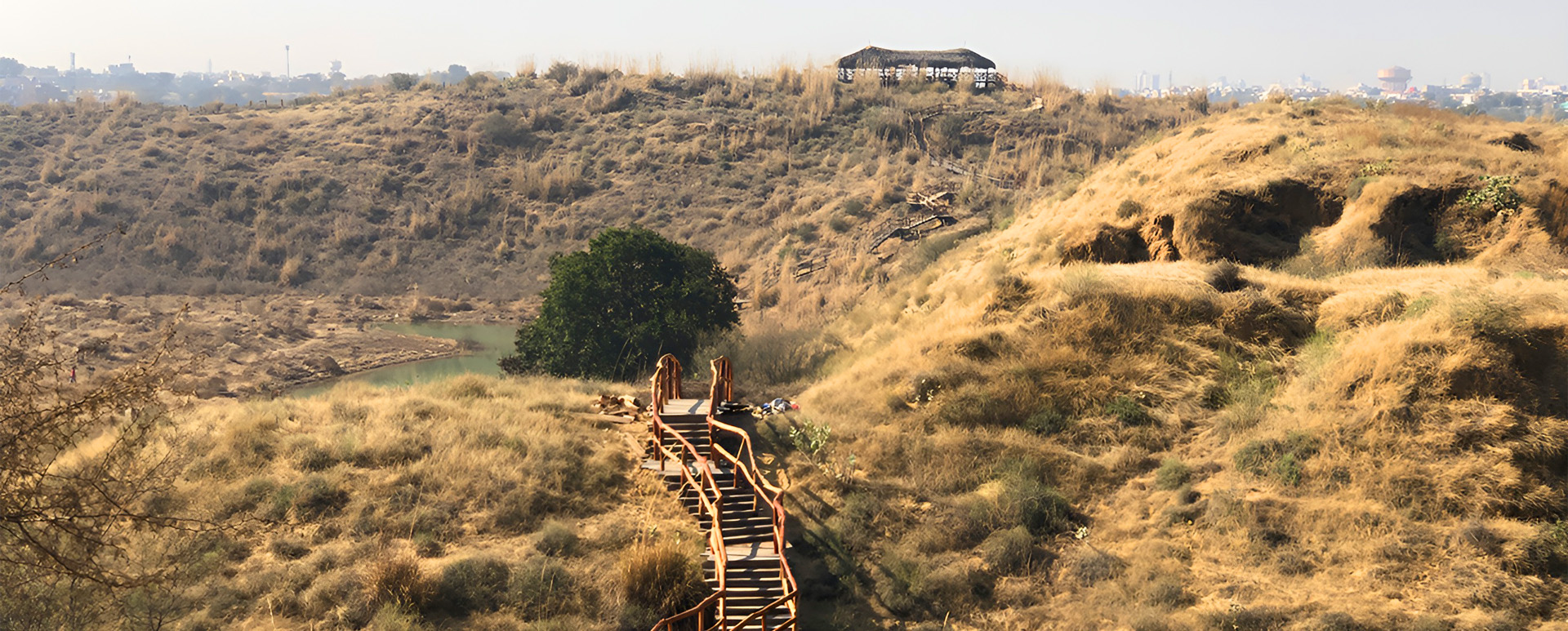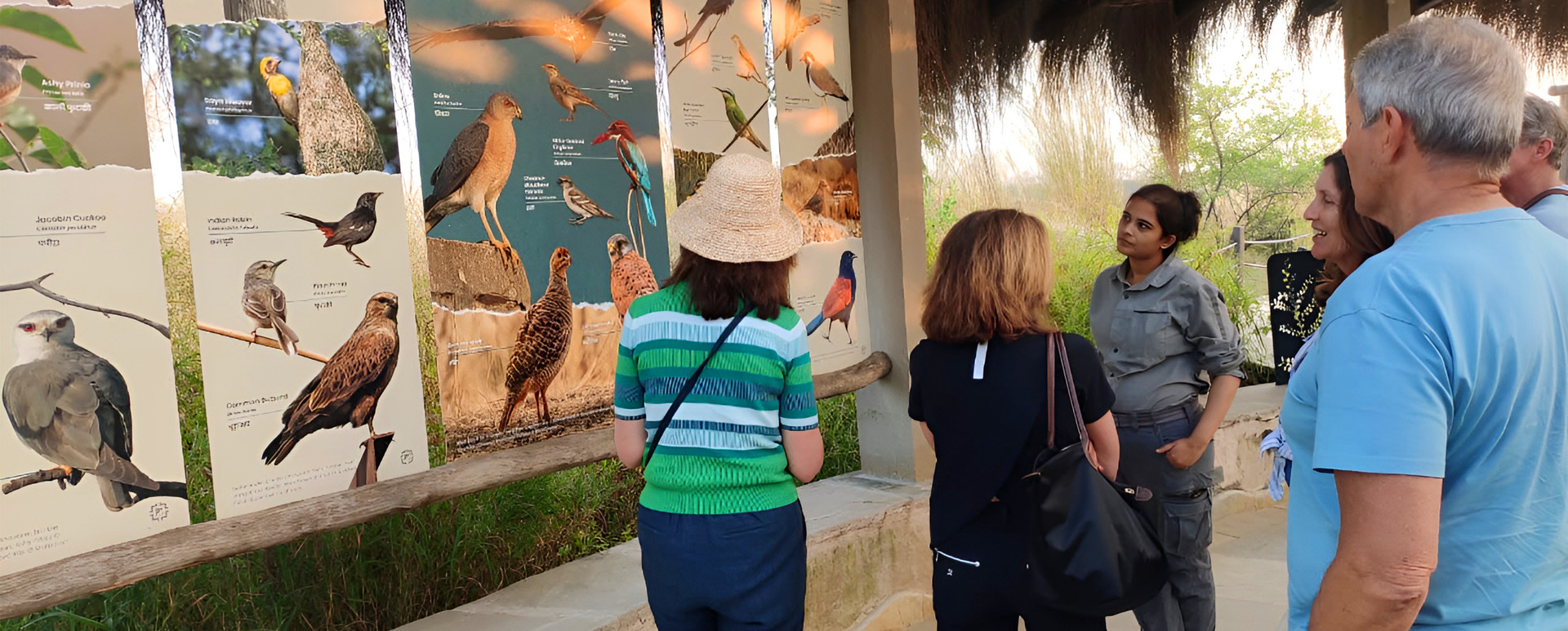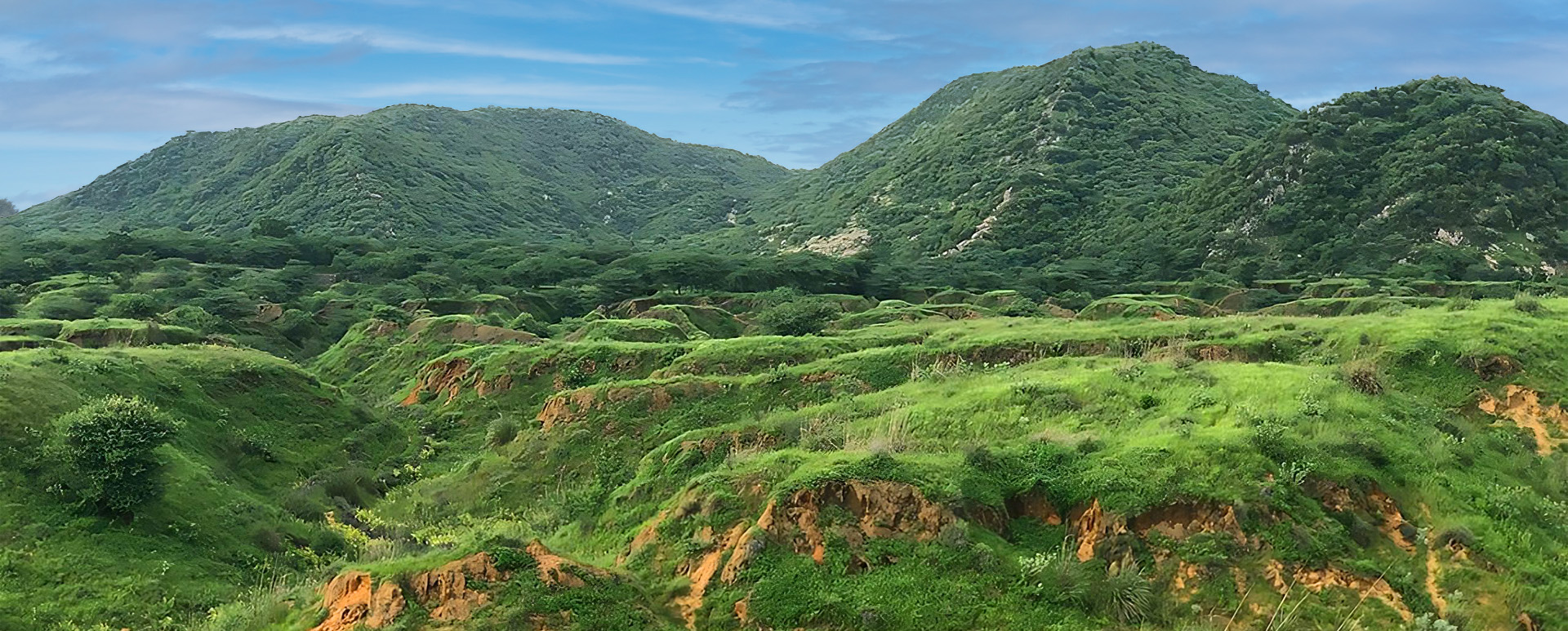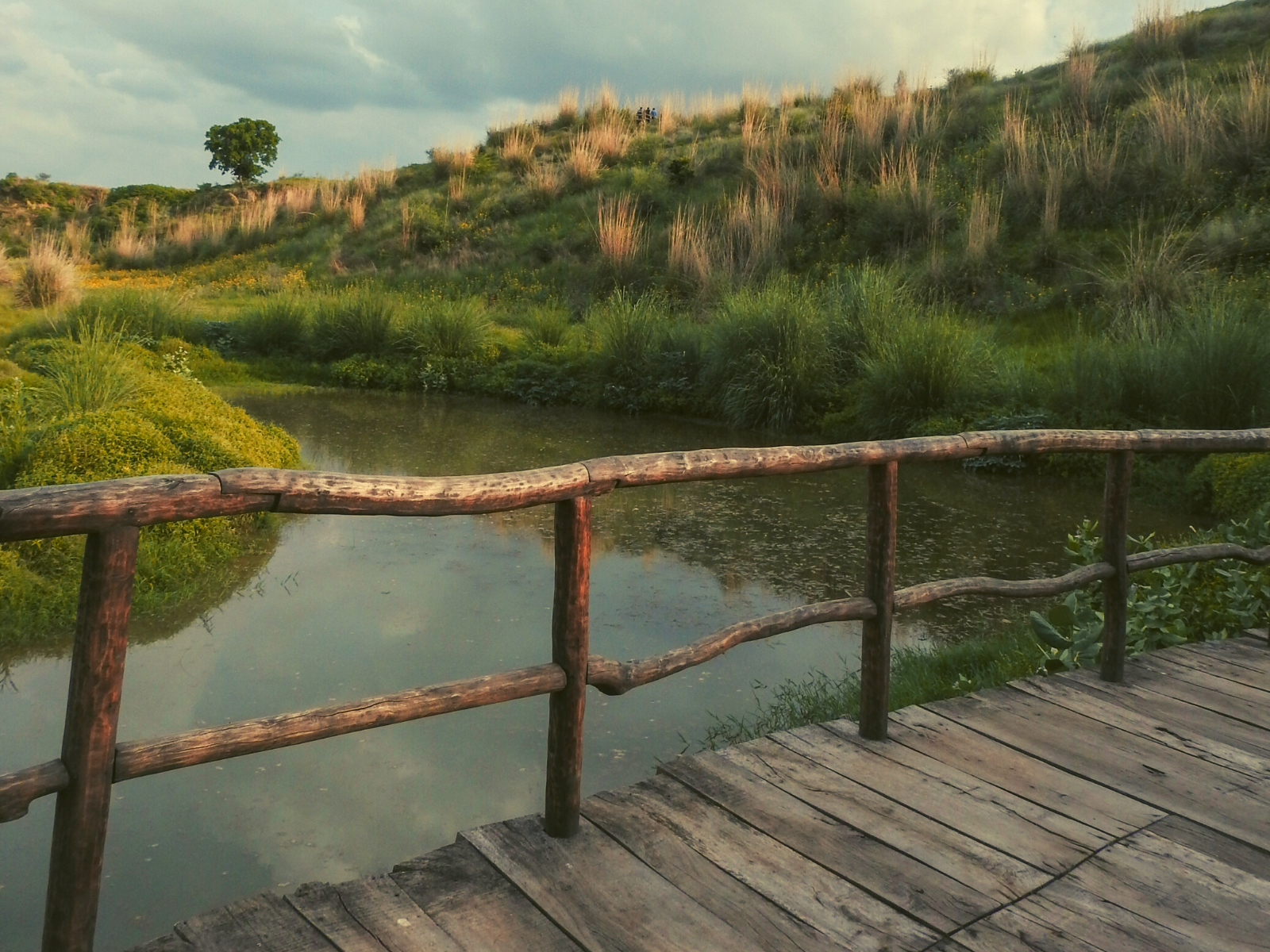The restoration project has been done by a team of ecological restoration practitioners and architects who have experience and familiarity with the Thar Desert. The project was a unique method of re-introducing not only plants but also the micro-organisms that play such an important part in any habitat restoration. For example, ‘inoculating’ a degraded habitat with soil brought from richer habitats, because this transfer brings not only micro-organisms and seeds of a large number of associated species, but also dusts the dunes with minerals that are essential to the new plants.
Work on rejuvenating Kishan Bagh began in the monsoon of 2016. Kishan Bagh was inaugurated by Rajasthan’s Chief Minister Ashok Gehlot Ji in December of 2021 and quickly became a popular tourist attraction for Jaipur’s residents.
The restoration project has been done by a team of ecological restoration practitioners and architects who have experience and familiarity with the Thar Desert. The project was a unique method of re-introducing not only plants but also the micro-organisms that play such an important part in any habitat restoration. For example, ‘inoculating’ a degraded habitat with soil brought from richer habitats, because this transfer brings not only micro-organisms and seeds of a large number of associated species, but also dusts the dunes with minerals that are essential to the new plants.
Work on rejuvenating Kishan Bagh began in the monsoon of 2016. Kishan Bagh was inaugurated by Rajasthan’s Chief Minister Ashok Gehlot Ji in December of 2021 and quickly became a popular tourist attraction for Jaipur’s residents.
